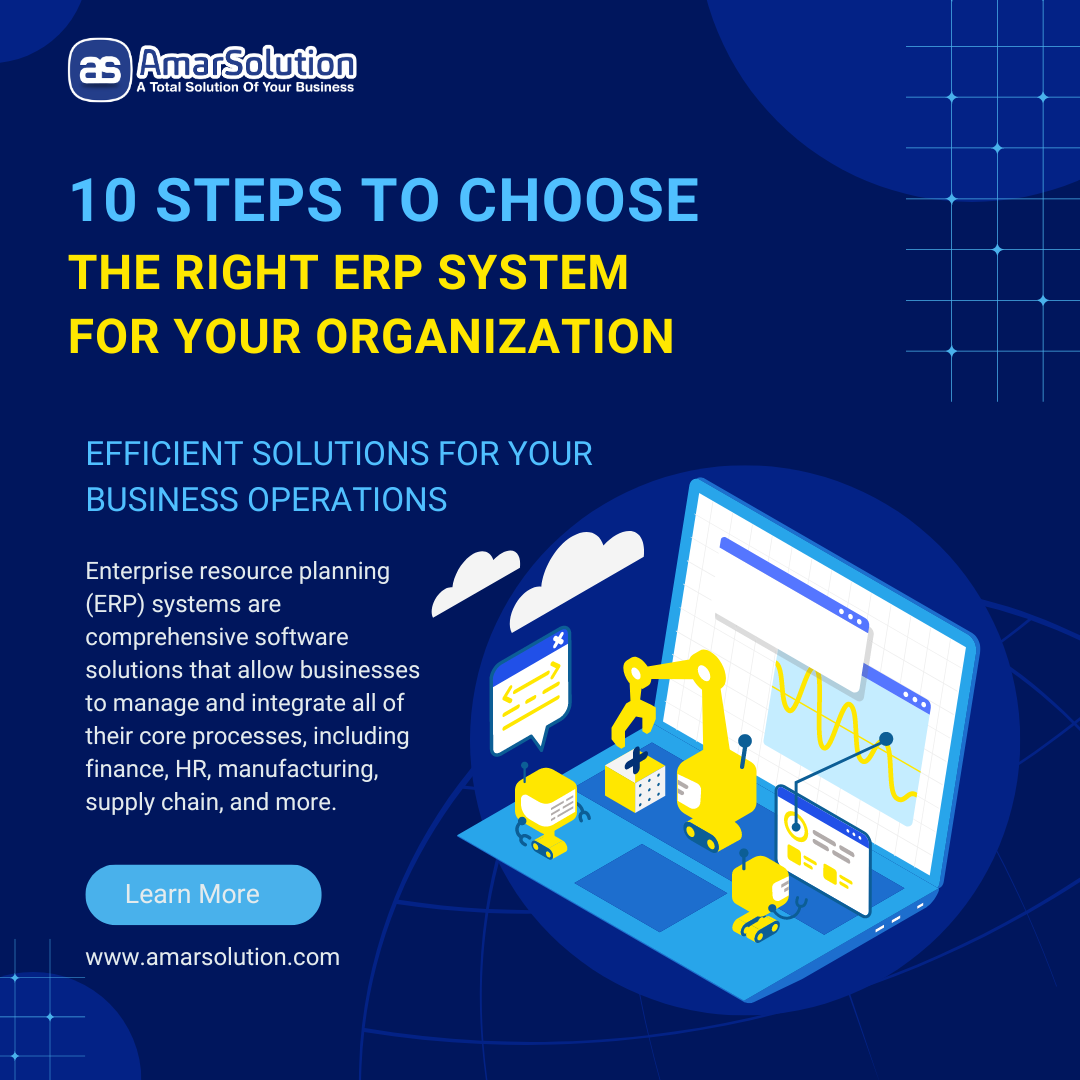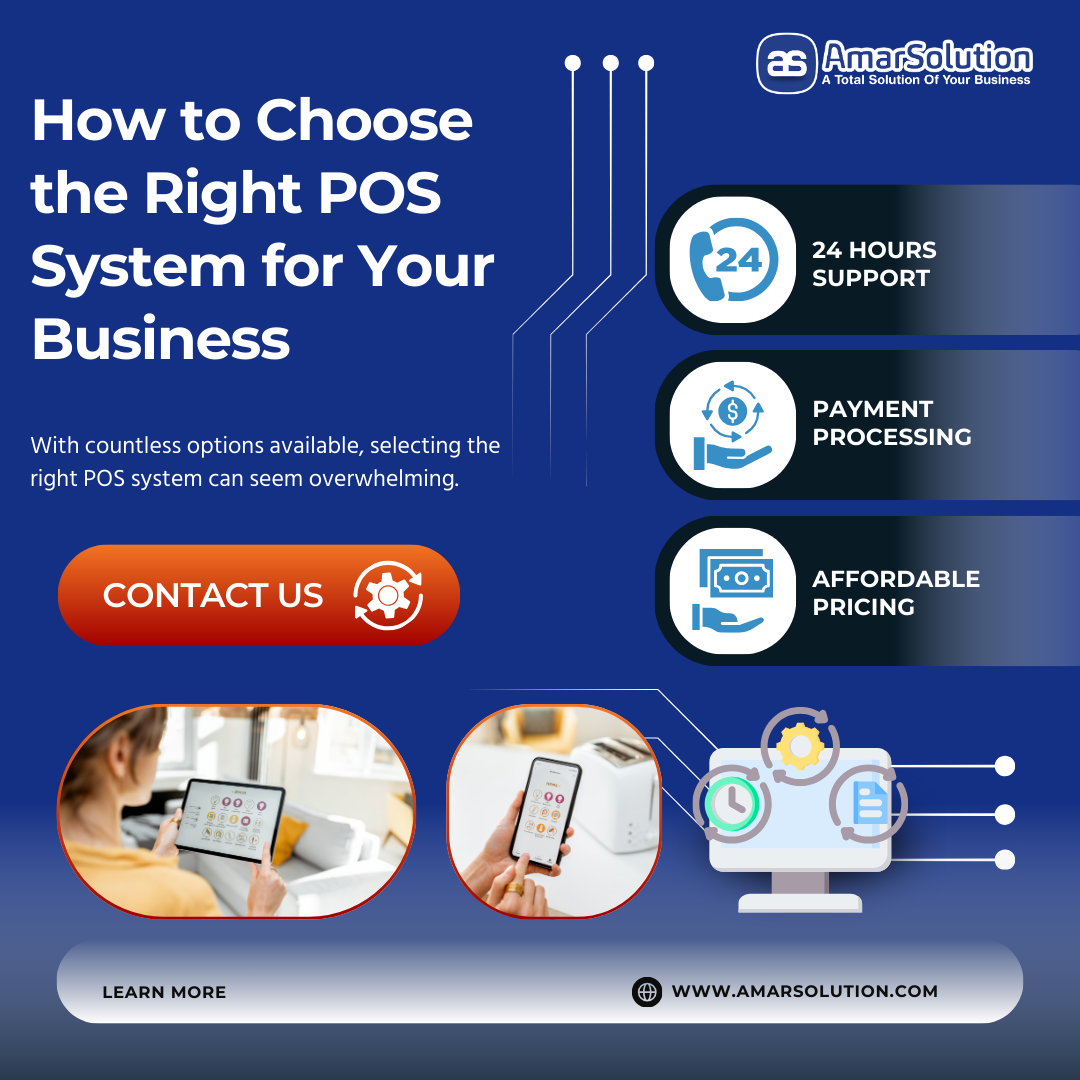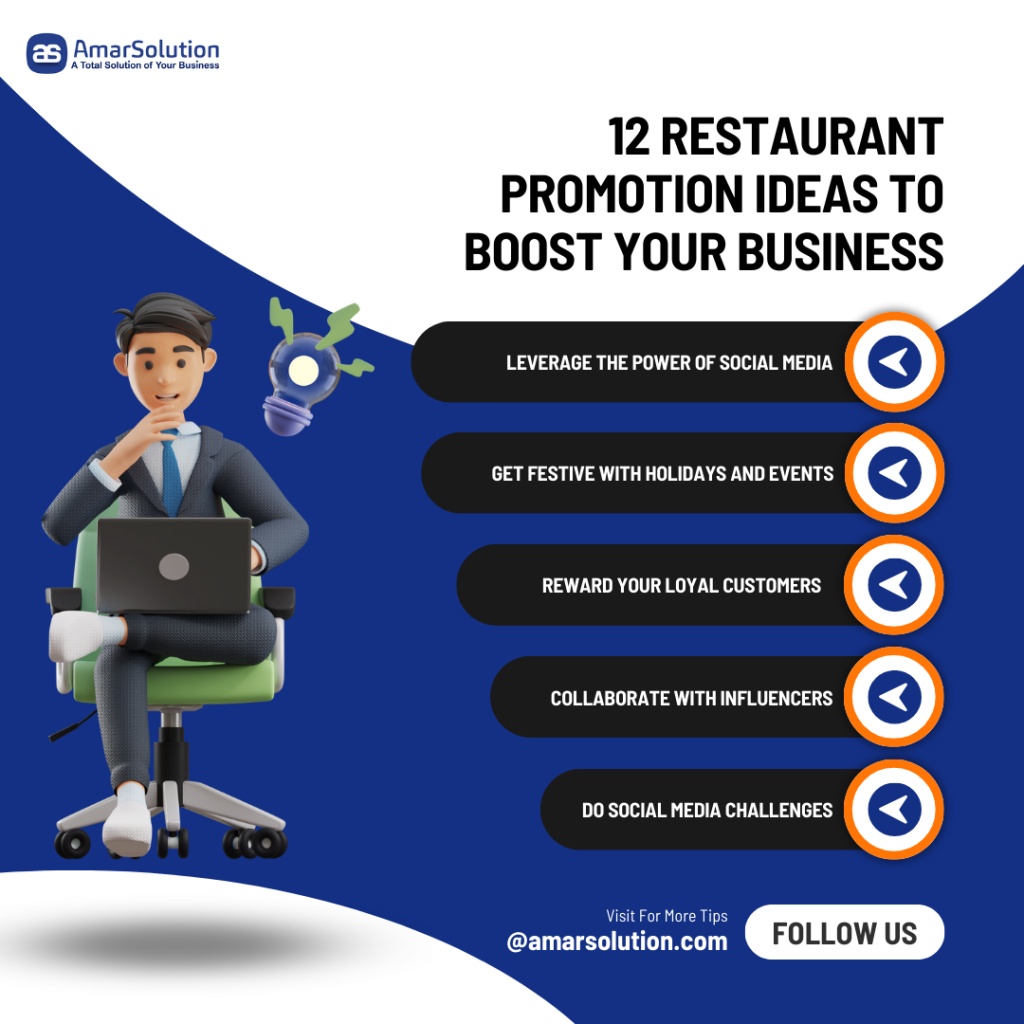10 Steps to Choose the Right ERP System for Your Organization
In today's fast-paced business environment, choosing the right ERP software is crucial for your organization's success. Enter Enterprise Resource Planning (ERP) software: a powerful tool that can integrate all your core business functions into a single system. But with a vast array of ERP options available, selecting the right one can be daunting. This blog post will guide you through the essential steps to choosing ERP software that sets your organization up for success.

1. Understand Your Business Needs
Before diving into the selection process, conduct a thorough analysis of your business processes and identify the pain points. Determine what you need from an ERP system. Do you need better inventory management, improved financial reporting, or enhanced customer relationship management? Understanding your specific requirements will help you focus on ERP solutions that cater to your needs.
Consider:
- Departments: Will the ERP cater to finance, HR, inventory, or all of them?
- Scalability: Will it adapt to your organization's growth plans?
- Industry-Specific Needs: Does your industry require specialized features?
2. Define Clear Objectives
Set clear, measurable objectives for what you hope to achieve with the new ERP system. Whether it's improving operational efficiency, reducing costs, or enhancing data accuracy, having defined goals will guide your selection process and help you evaluate potential systems.
3. Prioritize Key Features:
ERP systems offer a multitude of features, but prioritize those that directly address your needs. Common functionalities include:
- Financial Management: Streamline accounting, budgeting, and financial reporting.
- Supply Chain Management: Optimize inventory control, purchasing, and logistics.
- Customer Relationship Management (CRM): Enhance customer interactions and sales pipelines.
- Human Resource Management (HRM): Automate payroll, benefits, and employee data management.
4. Evaluate Vendors and Solutions:
Shortlist vendors whose ERP offerings align with your priorities. Conduct demos, research online reviews, and inquire about:
- Vendor Reputation: Look for a reliable vendor with a proven track record.
- Implementation Expertise: Ensure the vendor offers smooth implementation and user training.
- Integration Capabilities: Can the ERP integrate with your existing software?
- Scalability and Flexibility: Can the system adapt to future growth and changing needs?
5. Research Available Options
The market is flooded with various ERP solutions, each with its own strengths and weaknesses. Research different ERP vendors and their offerings. Look for industry-specific solutions as they are more likely to have features tailored to your business needs.
6. Consider Scalability and Flexibility
Your business will grow and evolve over time, and so will your ERP needs. Choose an ERP system that can scale with your business and adapt to changing requirements. Look for customizable solutions that allow you to add or modify features as needed.
7. Evaluate Integration Capabilities
An ERP system should seamlessly integrate with your existing software and systems. Evaluate the integration capabilities of the ERP solutions you are considering. Ensure they can communicate with your current applications, such as CRM software, e-commerce platforms, and other third-party tools.
8. Assess User-Friendliness
Many of the departments within your company will be using an ERP system, hence it must be easy to use and intuitive. Complicated systems can result in higher training expenses and lower acceptance rates. To make sure that the software is user-friendly, ask to see demos and include end users in the selection procedure.
9. Consider Total Cost of Ownership
The cost of an ERP system goes beyond the initial purchase price. Consider the total cost of ownership (TCO), which includes implementation, customization, training, maintenance, and support costs. Compare the TCO of different ERP solutions to ensure you are getting the best value for your investment.
10. Plan for Implementation and Training
A successful ERP implementation requires careful planning and execution. Develop a detailed implementation plan, including timelines, milestones, and responsibilities. Ensure that adequate training is provided to all users to maximize the benefits of the new system. Consider partnering with a reputable implementation partner to assist with the process.
Conclusion
Choosing the right ERP software is an important decision that can have a big impact on the success of your organization. Through understanding of your organization's needs, determining precise goals, looking into possibilities, along with evaluation of elements such as expandability, integration, and ease of use, you may choose an ERP system that generates productivity and expansion. Remember to consider the vendor’s reputation, total cost of ownership, and plan thoroughly for implementation and training to ensure a smooth transition and long-term success.
By following these steps and carefully evaluating your options, you can ensure a successful implementation that boosts your organization's efficiency, productivity, and overall success.
Our team can help you find the best ERP software for your needs and provide training as well. Contact us today to learn more about how we can help increase productivity with a ERP system.
You may read also – Top 10 ERP Software Companies in Bangladesh





 (1).jpg)





